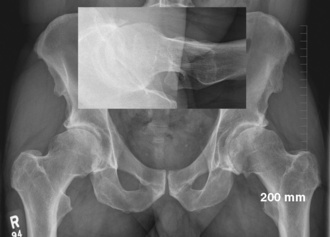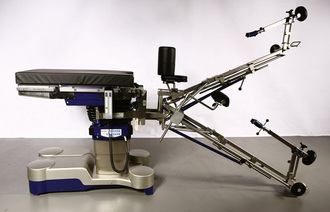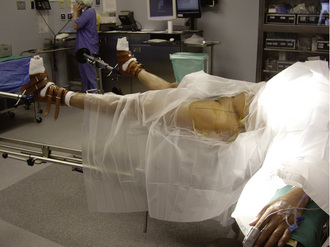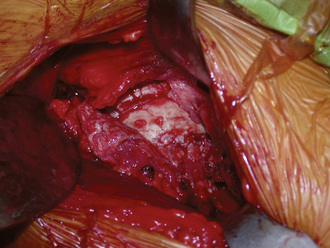CHAPTER 34 Anterior Hueter Approach for Hip Resurfacing in the Arthritic Patient
Relative contraindications
Imaging and diagnostic studies
Our hip series for evaluating the patient with osteoarthritis of the hip includes a supine anteroposterior pelvic view that is centered on the hips and that shows the proximal femur down to the diaphysis as well as cross-table lateral views, Dunn views, or both (Figure 34-1). These two radiographs are scrutinized to analyze for structural abnormalities (e.g., insufficient femoral head–neck offset), the integrity of the joint space, and periarticular bone. In the rare case of a patient with radiographic osteoarthritis of the hip joint without a typical clinical history or physical examination, we perform an intra-articular anesthetic injection to determine whether the patient’s symptoms are a result of the radiographic hip degeneration.
Surgical technique
Although the anterior Hueter approach can be performed without a special surgical table, our main experience is with the use of a specialty orthopedic traction table (Figure 34-2). We do not exclude patients on the basis of body mass index or underlying deformity.
Exposure
The incision is placed 1 cm to 2 cm posterolateral and 2 cm distal to the anterosuperior iliac spine. The incision is extended distally and posterolaterally toward a line that connects to the fibular head for a total of 6 cm to 10 cm. The subcutaneous tissue is divided with the use of electrocautery until the aponeurosis of the tensor of the fascia lata is identified. The latter is incised longitudinally with a No. 10 blade, with all muscle fibers preserved. Blunt finger dissection is then performed between the medial aspect of the muscle belly (which can sometimes be bipennate) and the aponeurosis. At this point, retractors are placed in between the muscle and its sheath to expose the rectus femoris and the fat that overlies the hip capsule. With the use of electrocautery, this fat is removed to expose the capsule. After incising the fascia over the rectus femoris, blunt dissection is performed to expose the lateral circumflex vessels, which are then ligated and cut. These vessels can bleed briskly, and they deserve attention. Some of the lateral aspects of the rectus femoris and the iliocapsularis muscle can be elevated to maximize the exposure of the hip capsule. It is recommended to release the reflected head of the rectus femoris to facilitate the exposure of the acetabulum. At this point, the capsulotomy is performed with the use of electrocautery from inferomedial to superolateral, and a second transverse capsular incision is made from inferomedial to lateral, leaving a laterally based capsular flap attached to the proximal femur. In some cases, it is preferable to excise the lateral capsular flap to facilitate the delivery of the proximal femur (Figure 34-4). A large cobra retractor is then placed around the proximal femur to retract the tensor muscle laterally, and a blunt Hohmann retractor is placed at the inferomedial femoral neck.
< div class='tao-gold-member'>
Stay updated, free articles. Join our Telegram channel

Full access? Get Clinical Tree














